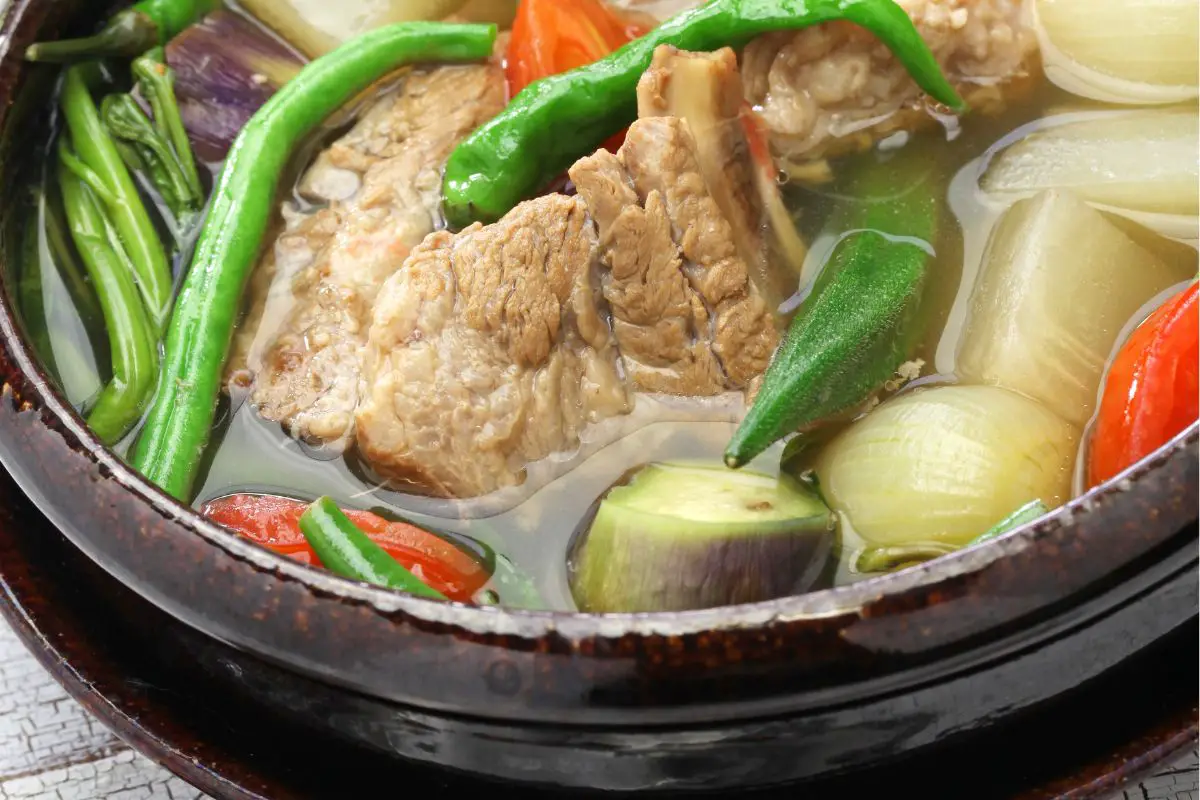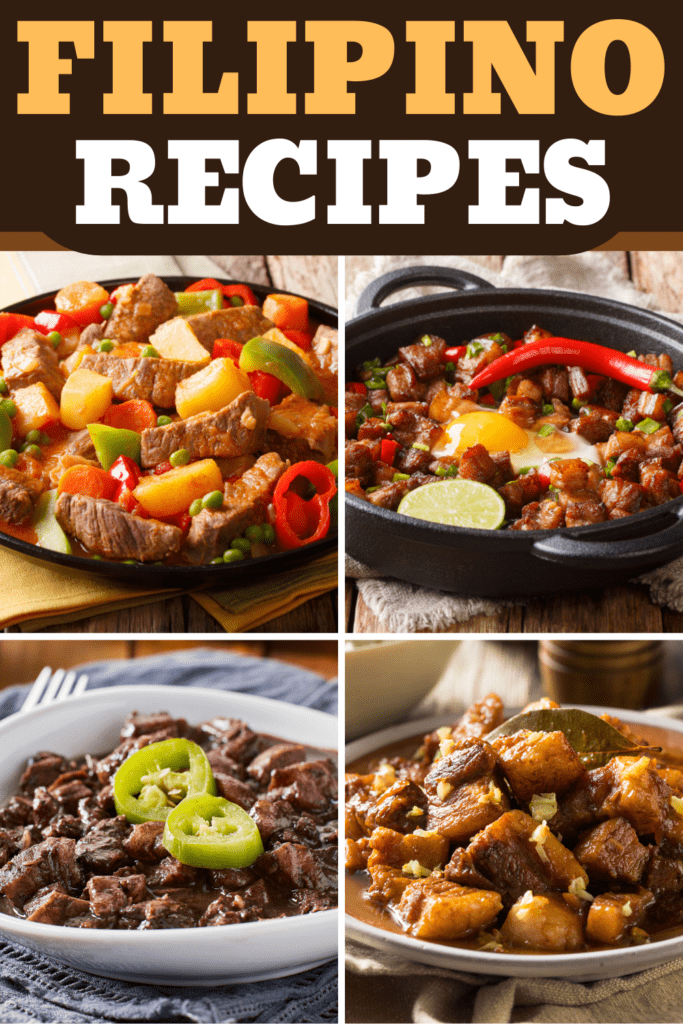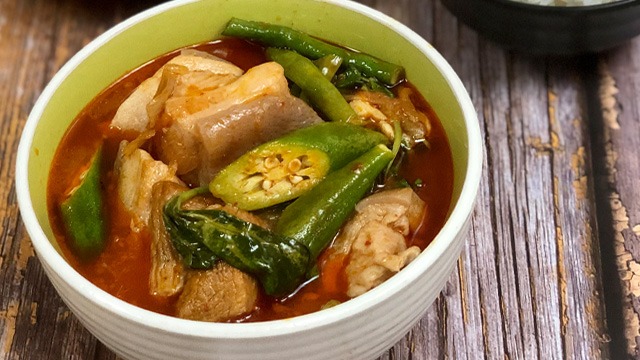Step-by-Step Filipino Food Recipes for Beginners.
Discover the Rich Preference of Filipino Cuisine With These Must-Try Recipes
Filipino cuisine provides an exceptional tapestry of tastes that show the country's rich cultural heritage. Each dish informs a tale, from the full-flavored deepness of Adobo to the rejuvenating flavor of Sinigang, welcoming culinary enthusiasts to explore a diverse selection of preferences. The joyful appeal of Lechon and the calming heat of Kare-Kare additionally enhance this gastronomic trip, while the lively Halo-Halo offers a wonderful final thought to any type of meal. As we think about the nuances of these iconic dishes, one need to consider exactly how they not only please the taste buds however also connect us to a broader social story.
Adobo: The Famous Meal
Adobo has become the essential dish of Filipino cuisine, exciting palates both in your area and abroad. This precious recipe is defined by its unique combination of savory, sour, and a little pleasant flavors, attained through a meticulous marination process. Generally, adobo is prepared making use of poultry or pork, although variants exist that include seafood and veggies.
The essential ingredients of adobo consist of soy sauce, vinegar, garlic, bay leaves, and black pepper, which with each other create an abundant and aromatic sauce. The cooking approach commonly entails simmering the meat in the marinade, enabling it to soak up the complex flavors while ending up being tender. This procedure not just improves the taste yet also functions as an all-natural chemical, making adobo a perfect meal for storage space.
Adobo is usually offered with fit to be tied rice, which enhances its durable flavor profile. Whether delighted in at home or in restaurants, adobo remains a staple that symbolizes the essence of Filipino hospitality, making it a must-try for anybody exploring this vivid food.

Sinigang: A Tangy Delight
An additional cornerstone of Filipino food is sinigang, a recipe commemorated for its distinctive tasty flavor. This mouthwatering soup is generally made with a range of meats, consisting of pork, beef, shrimp, or fish, and is defined by its sour brew, which commonly acquires from tamarind, green mango, or calamansi. The equilibrium of level of acidity and umami creates a revitalizing comparison that is both calming and invigorating.
Sinigang is commonly enriched with an array of fresh veggies such as radish, eggplant, water spinach, and string beans, contributing not only to the recipe's taste profile yet also to its nutritional worth - Filipino food recipes. Each family members might have its own version, with regional variants that reflect regional components and social influences
The prep work of sinigang includes simmering the selected meat till tender, complied with by the addition of the souring agent and vegetables. This method permits the flavors to meld wonderfully, resulting in a hearty and enjoyable dish. Commonly offered with steamed rice, sinigang embodies the significance of Filipino hospitality and is a cherished staple, frequently delighted in during family events and special occasions.
Lechon: The Cheery Roast
Lechon, frequently considered the centerpiece of festive Filipino celebrations, is a delicious baked pig recognized for its crispy skin and additional hints tender, flavorful meat. This legendary recipe is deeply rooted in Filipino society, typically gracing tables during birthday celebrations, weddings, and significant vacations. The prep work of lechon is an art kind, requiring meticulous interest to detail, from seasoning the pig with a mix of spices to making certain an even roast over an open fire or in a specialized stove.
Commonly, the pig is experienced with a mix of salt, pepper, and regional herbs, imparting an abundant flavor that matches its all-natural juiciness. The cooking procedure can take numerous hours, during which the skin changes right into a flawlessly crunchy layer, developing a fascinating contrast to the delicious meat under.
Lechon is typically served with a side of liver sauce or vinegar dip, improving its mouthwatering profile. It is not just a meal however a public experience, as households and friends gather around to enjoy this superb recipe. The scent of lechon wafting with the air is an invitation to delight, making it a beloved sign of event in Filipino society.
Kare-Kare: Oxtail Stew
Kare-Kare, an abundant and passionate oxtail stew, holds an unique place in Filipino culinary tradition, commemorated for its special taste profile and vivid discussion (Filipino food recipes). This dish is characterized by its lush peanut sauce, which is developed by grinding roasted peanuts or utilizing peanut butter, offering it a creamy and nutty significance. Traditionally, kare-kare functions tender oxtail, although look at this web-site variations may include tripe or beef shank, each adding to the stew's depth of flavor
The preparation of kare-kare generally includes slow-cooking the meat until it ends up being remarkably tender. The enhancement of a variety of veggies, such as eggplant, string beans, and banana hearts, not only improves the stew's nutritional worth however also its aesthetic appeal. Offered with a side of bagoong, or fermented shrimp paste, kare-kare perfectly stabilizes its rich, savory notes with a salted kick.
Commonly appreciated throughout unique events and household celebrations, kare-kare personifies the essence of public eating in Filipino society. Its delightful intricacy and reassuring warmth make it a recipe that is not just pleasing to the palate but additionally evokes a sense of nostalgia for many Filipinos around the globe.

Halo-Halo: A Sweet Treat
Halo-halo is frequently considered as the ultimate Filipino treat, commemorated for its dynamic mix of appearances and flavors - Filipino food recipes. This delightful mixture is a best depiction of the Philippines' abundant culinary heritage, combining numerous components that collaborate to create a refreshing and indulgent reward, particularly during heat
At its core, halo-halo functions smashed ice topped with a selection of ingredients, including sweetened beans, jellies, fruits like bananas and jackfruit, and creamy leche flan. A charitable scoop of ube (purple yam) ice cream crowns the mixture, including an abundant, luscious taste that raises the treat. The layering of ingredients not only develops a banquet for the eyes however additionally provides an intricate interplay of sweetness and appearance in every dose.
Commonly offered in a glass, halo-halo encourages diners to mix the materials prior to appreciating. This communal aspect boosts the treat's charm, as everyone's version can be distinctly tailored. Whether delighted in as a street food indulgence or an unique celebration reward, halo-halo continues to be a cherished symbol of Filipino society, welcoming every person to explore its fascinating and diverse tastes.
Conclusion
